

EPHJ-EMPT Lausanne-Geneva, part 1/3: The casemakers.
Report realised last year in Lausanne:
Very often, the visits organized by the manufactories are no more than locked marketing operations.
One follows the thick dotted yellow line, wearing a white coat, slippers and a mobcap. One can see “watchmakers” without mobcaps but with pink iPods in their ears, fit ready-made movements into ready-made watchcases.
The manufacture where the parts, the materials, the movements and the cases are worked is always elsewhere, in the Vallée de Joux, at Le Locle, at La Chaux de Fond, almost in a foreign country, as seen from Plans les Ouates.
Lionel Ladoire:
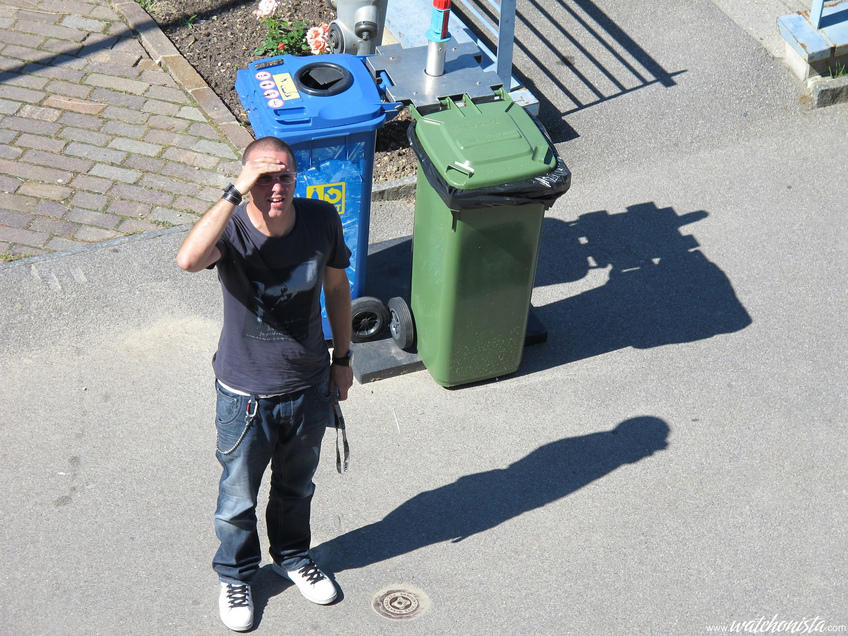
At the end, one has seen very little of these « manuf’s ». Hence, on the forums there are a lot of conjectures about everything, about materials, costs, processes, sometimes rightly, often wrongly. Finally, the typical Helvetian discretion strategy prevents any further information to be gathered. Unless one makes the effort, all relative since it is a pleasure, to attend the EPHJ-EPMT/SMT in Lausanne.
So much so that this year and for the last time, the EPHJ took place in Lausanne.
The event, built stone by stone by its creators throughout the last 10 years, is very different from pyramidal events, such as BaselWorld. EPHJ was organized in a collaborative way; many exhibitors supported the building of a marginally commercial event.
Eric Coudray:
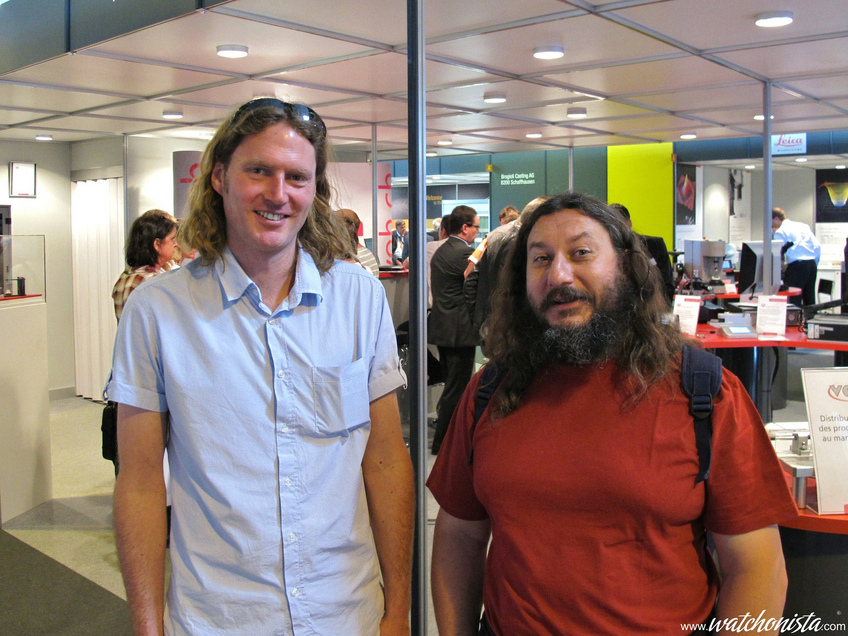
Reality of the market, aroused ambitions, the Baulieu Palace in Lausanne was bought by BaselWorld (the organization by itself, no links with the watchmaking show by SG). Because of the increasing interest for this event, BaselWorld offered to buy out the organization of the show. But as its creators declined the offer, the event could not take place in Lausanne any more. The new owners tried to launch a similar trade show for 2012, alas! The professionals, united under the banner of Babette Keller, refused to participate; at the end of the event, more than 250 exhibitors (out of 900) re-affirmed their confidence in the original creators.
Marco @ Work:
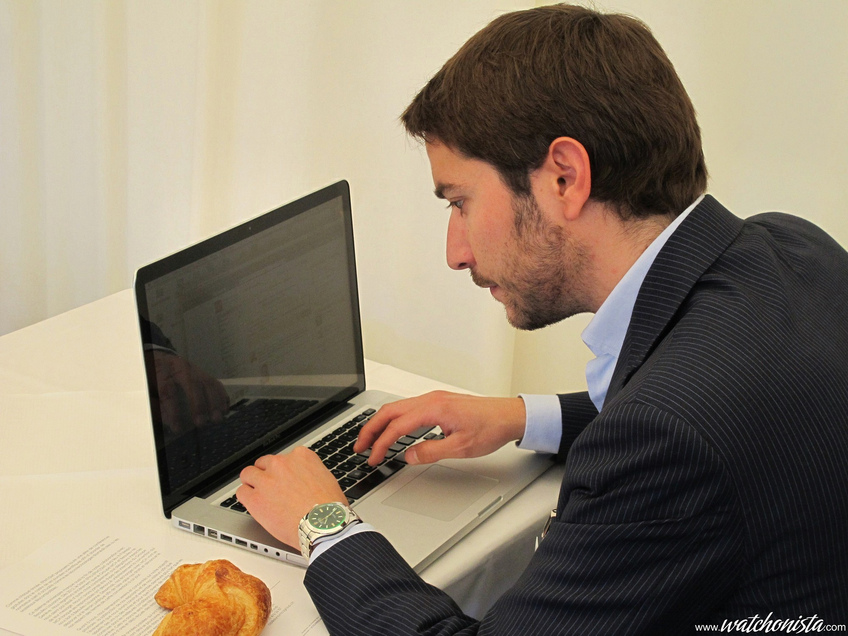
As the historical core of the event is constituted of these professionals, most of them being watchmakers (the event is also dedicated to medical and micro technologies fields), the next EPHJ 2012 should take place at Palexpo, Geneva. Despite the extra constraints, the exhibitors engaged totally in the struggle of the small event (the EPHJ) against the big ones (BaselWorld), in an approach deeply linked to the Helvetian citizenship. The choice of favoring the classic and cantonal solidarity networks Vs. the big business machine, even though it is less convenient (Lausanne is more central than Geneva), sounds like the result of “votations”, a concept absolutely incomprehensible to non-Helvetians. This resistance, almost natural, and this solidarity at a local level, is one of the keys to the successes of Switzerland. Abdicating means that quality goes down very quickly; then comes the outsourcing of the production to China, to eventually undermine the very basis of the local economy.
The success of the confederation, economic as well as horologic, are based on the "do not let go” in terms of quality, as well as for other matters. It is the guaranty of watches featuring state-of-the-art finishes.
The cream (cofee + croissants) of the watch journalists, from lest to right: Malik Bahri, Gregory Pons, Marco Gabella, Joel Grandjean.
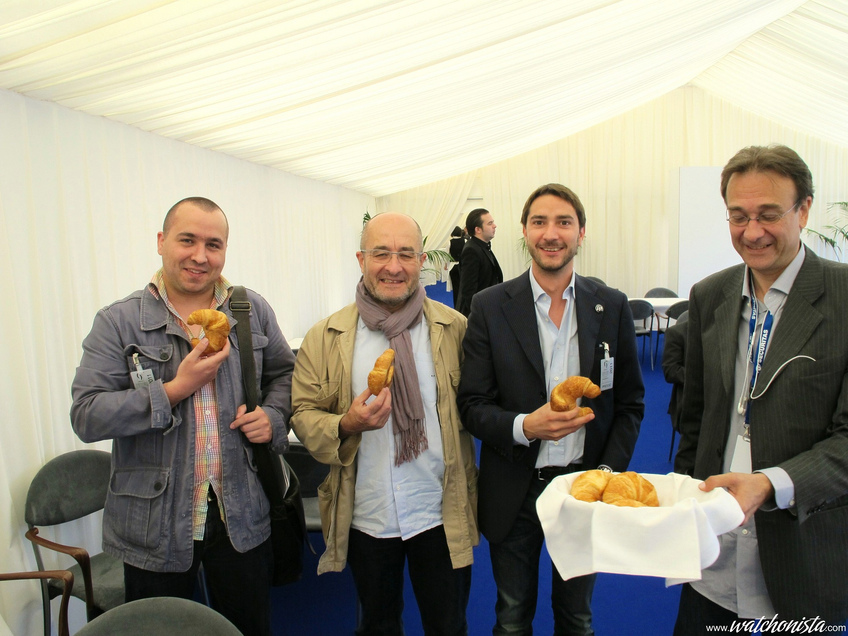
This will be the guideline of this article: the EPHJ is definitely the core of the Helvetian watchmaking industry.
It is the only event where one can see the CEO of the greatest watch brands and the most famous watchmakers casually dressed in polo shirts, away from the journalists (except for Pons, who works a lot during this week), the photographers and the PR. It is the place where one can increase one’s knowledge of this industry.
Pita Barcolona:
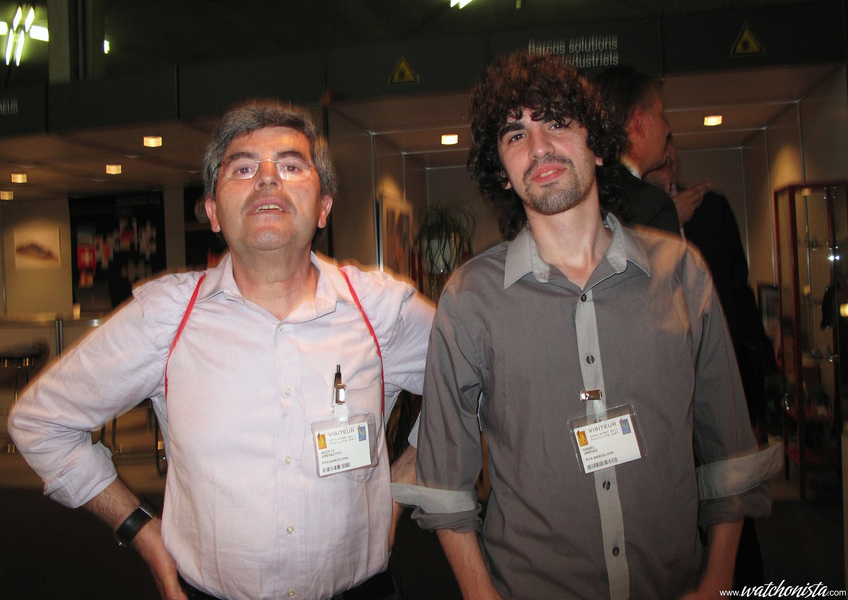
I mentioned Babette Keller earlier, ladies first. Babette is a little-big name in the watchmaking subcontractors field; Every one of you has unknowingly had products from Babette in your hands, since she has a quasi-monopoly on microfiber for horologic purpose: every time you wipe you watch with an OEM duster, every time you handle a piece in AD with gloves, you touch fabrics transformed by Keller Trading. The bolts come from Japan (like the Super-Luminova, I talk about it later), they are cut, sewed, labeled from Babette, and delivered to your favorite brands.
Babette Keller:
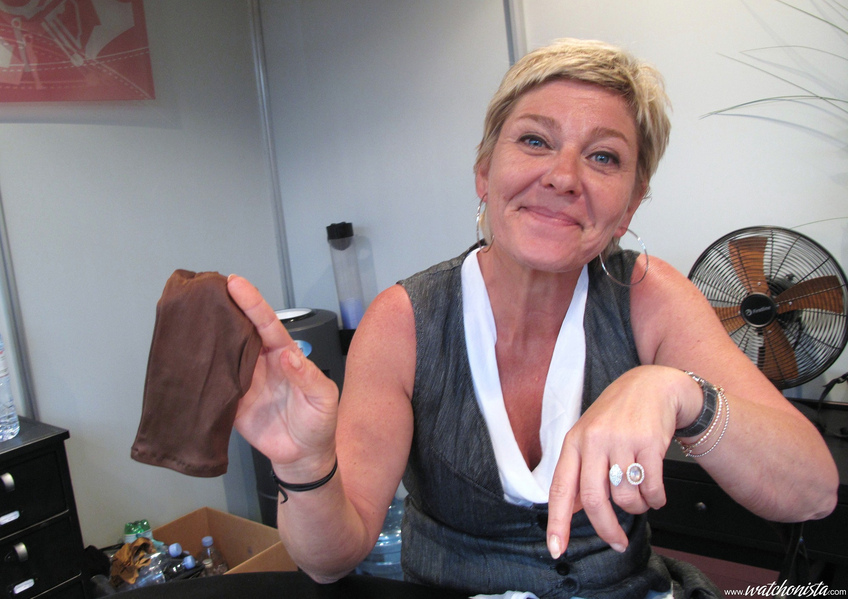
Babette, a tall woman and a skilled communicator who has a deep social insight, took upon herself to talk professional into creating a network of supporters of the EPHJ's original founders. It makes perfect sense if one considers her somewhat ecological vision (meaning: respectful of the environment) and her HR management; I find these views quite similar to those of Jean-Marc Wiederrecht, from Agenhor.
In order to complete the excellent interview of Babette in June 2009, about the crisis among other topics, the presenter talked to her about the "bosses"; and yet, Babette emphasized with subtlety the real dichotomy between the management of small businesses, which has had a hard time with its employees, and the international corporate finance world, which has been so out of touch with the realities of the market..
In the area, it is not too difficult to observe that a salaried Genevan Trader is far less concerned about the salary problems than the CEO of a small watchmaking company from Romandy.
http://www.tsr.ch/video/#bcid=668408;vid=10681039;id=543542
The workshop:
http://www.tsr.ch/video/info/journal-12h45/775624-ne-portrait-de-babette-keller-dont-la-fabrique-de-serviettes-de-polissage-n-emploie-pratiquement-que-des-femmes.html#id=775624
The EPHJ is also very much focused on the material. I love the watchcases made of exotic materials, and the great brand's communication on the subject is rather minimalistic. There is a good reason for that: the product managers attend the EPHJ, they order watchcases made of exotic materials, and the information gets lost into the twists and turns of the brands' marketing services. In the end, it is impossible for the watch lover to trace the process.
Denis Flageollet:
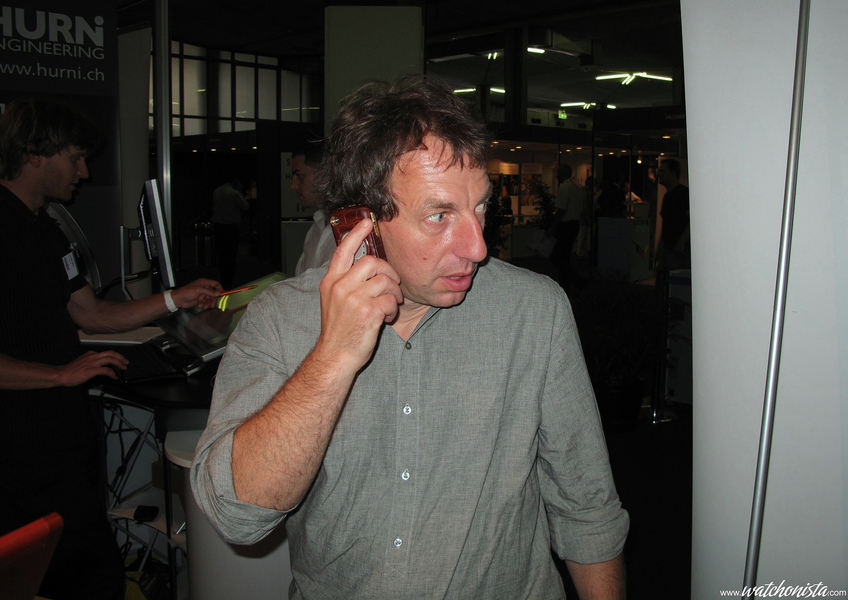
Surprisingly, and just as Babette who almost has a monopoly of the microfiber market, Bangerter historically corners the market on the ceramic watchcases production;
Since 1972, this case maker has specialized in the field of ceramic, a little by chance in the beginning, through the meeting between a manufacturer and a subcontractor. Today, they produce a majority of the most beautiful ceramic cases, for the most prestigious names. Out of respect for my interlocutor, I won't reveal these names.
The rough ceramic is delivered as cylinders of diverse colors, because the material is neither cast nor injected: the watchcases are shaped by CNC milling only. The final costs are very high, several hundred Ch Francs, or even thousands; a ceramic case represents a serious part of the final price of a watch. When you buy a ceramic watch, you buy a genuine luxury product.
On the contrary, and in spite of it not really being a material, the PVD's cost is trivial, a few tens of CH Francs for a watchcase (to which the cost of transfer toward and from the subcontractor has to be added).
If the cost is trivial, the effect can be spectacular; I visited several booths specialized in surface treatments, and I especially stayed for a while at Positive Coating's; at the moment, apart from the everlasting black finish, the field and especially the fashion watchmaking industry, seldom takes advantage of the possibilities offered by surface treatments . The possible colors cover almost the entire spectrum, and moreover, offer superb pearly hues.
The pearly PVD allows for funny creations, such as pearly PVD coated movements associated with mother-of-pearl dials.
The resistance of the PVD coating can be problematic, as it depends on the watchcase's material: the treatment will last longer if applied on a metal whose hardness is close to that of the selected coating.
The manufacturers could put an end to many of the criticisms about the surface treatments, by studying further the association metal/coating, or by including in the package the future and relatively cheap after sale services.
Just as for the initial treatment, the after sale services must be planned in advance, because it is relatively simple to chemically remove the coating before replacing it, the point being, once again, that one must seriously manage the association metal/coating.
Finally, one last point regarding the surface treatments: the ALD, a technology especially developed by a Nokia's subsidiary and which allows the coating to be applied layer by layer down to the molecular scale.
If this technique is different from the galvanoplasty, the principle is relatively similar: the coating is thickened layer by layer; the advantage provided by the ALD is that it allows for irregular surfaces to be treated effectively, while the coating's mechanical resistance is theoretically higher. This technology will probably be used by the watchmaking industry in a few years.
In order to complete the topic on black surfaces, it is indispensable to talk about carbon fiber. The competition in this field is tougher than for that of the ceramic. Just as the surface treatments, several small companies have a share of the Confederation's watch market. Bush welcomes me, and I gather more information within 20 minutes of conversation with a professional (it is often the case in this event) than in years spent on horologic forums.
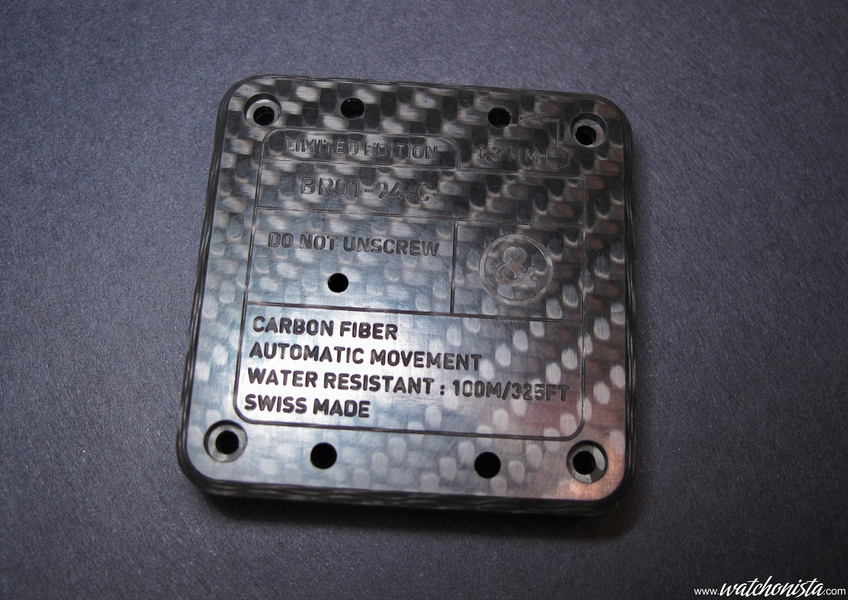
The raw carbon fiber is a delivered as piled-up woven layers (Bush only transforms the product). These layers are impregnated with a heat-hardening resin, and the overall is solidified by heating in an autoclave at 70ºC (that's the technique utilized by Bush). Other techniques rely on heating at 300ºC or through a series of chemical reactions. The "forged carbon" is produced through the same process, but starting from a stack of unwoven fibers (Bush's technique works perfectly for this kind of composite, which is not true for all the methods).
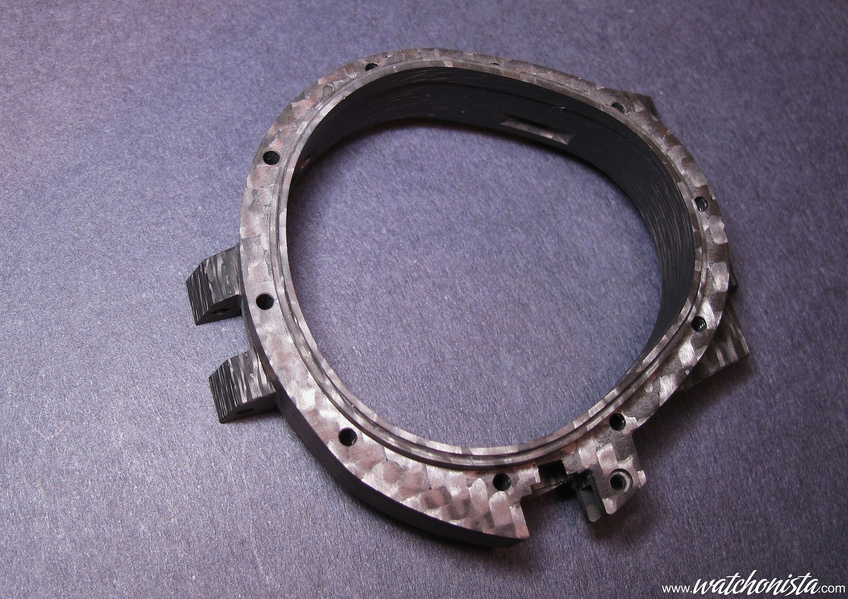
The "forged carbon" is structurally less resistant than the woven type, but it doesn't matter, since the watch cases don't have to withstand important mechanical stresses.
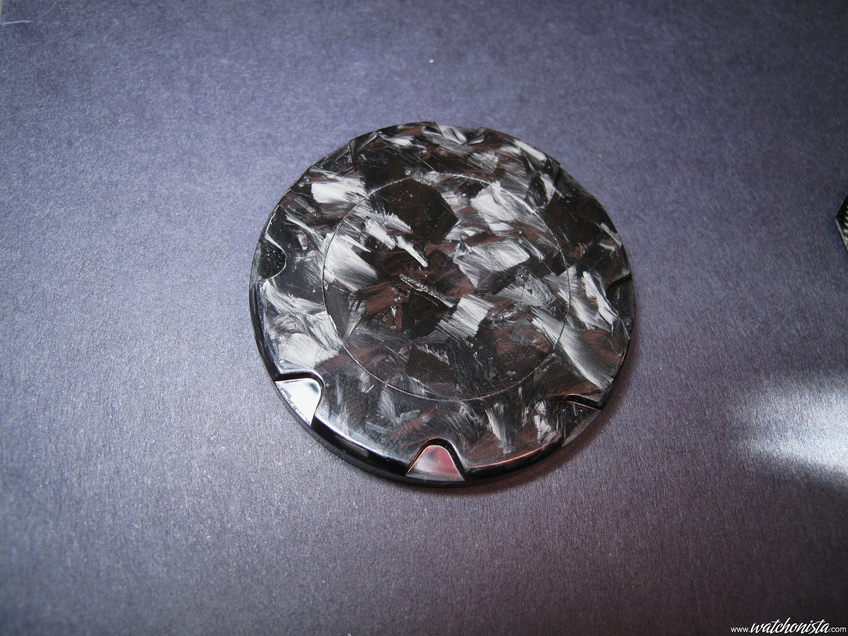
Once the carbon dyes are ready, they are cut up in squares, which are then CNC milled into their final shape: case/case back/dial (mainly)
The scrapings produced by this process are wasted (they cannot be recycled into "forged carbon"), and the treatment of the waste is costly, since carbon fiber is a very resistant material, and therefore very difficult to recycle.
As a result, with a very expensive material, with enormous wastes (imagine the amount of matter removed to obtain a watch case) , costly to dispose of, the final prices skyrocket, several hundred Ch Francs for a complete watchcase.
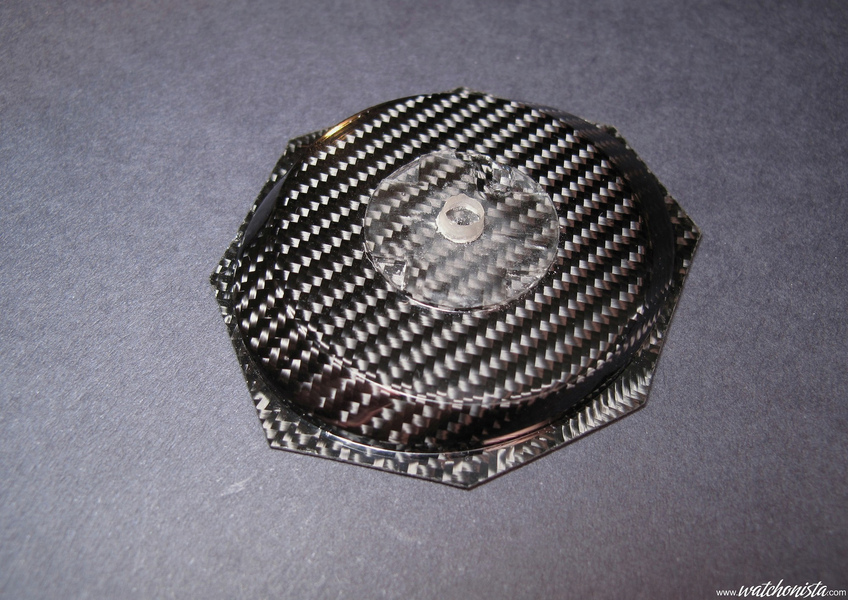
Finally, the last cutting-edge materials are the exotic metals; the manufactories buy them as rods, or even as pre-machined cases, ready for the finishes stage. The price for cases pre-machined into very exotic materials, such as zirconium or tantalum, can quickly soar up to about 1500Chf per kg. Not to mention the extra CNC machining the manufactory has to perform for the finishes (or at watchcase subcontractors; titanium, for example, demands special numerical machining, because of the risks of fire). The finishing operations on this type of materials are very costly: the "exotic" ones are very often far harder than steel or gold (platinum is one of those, very costly to machine), hardness which takes a slower work and leads to a premature wear of the cutting tools, not to mention the breaks, far more frequent than with more ductile materials. The morale is that the price of exotic watchcases increases quickly compared to steel; however, if the final charge is higher by 20 to 30% because of the use of an unusual material, a cost close to that of a gold case is not justified, when one takes into account the extremely high valuation of precious metals.
Now that you have a watchcase, you need a movement to fill it. If there are big surprises regarding the production of cases, demystifying many misconceptions, the production of movements reminded me of the day I discovered that Santa Clause did not exist. The word "manufactory" was sullied, we knew it, but the guiltiest of subcontracting are really not the ones most supposedly prone to do it. And surprisingly, the most presumptuous among the watchmaking CEOs, those who, prima facie, don't respect the sacrosanct nobility of integrated manufacturing, become more likeable since they show a disarming frankness. And one starts to worship the independent watchmakers for their total openness. Even worse, actually there are independents that sell at very reasonable prices, given the outrageous prices charged by luxury watchmakers, not really justified by the real cost of subcontracting. These rates are charged by some great names which cannot be suspected of outsourcing.


